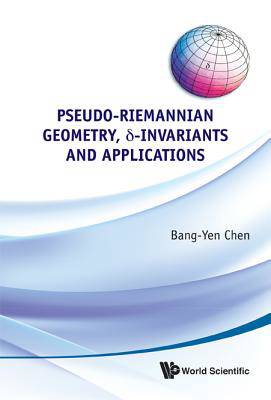
- Afhalen na 1 uur in een winkel met voorraad
- Gratis thuislevering in België vanaf € 30
- Ruim aanbod met 7 miljoen producten
- Afhalen na 1 uur in een winkel met voorraad
- Gratis thuislevering in België vanaf € 30
- Ruim aanbod met 7 miljoen producten
Zoeken
Omschrijving
The first part of this book provides a self-contained and accessible introduction to the subject in the general setting of pseudo-Riemannian manifolds and their non-degenerate submanifolds, only assuming from the reader some basic knowledge about manifold theory. A number of recent results on pseudo-Riemannian submanifolds are also included.The second part of this book is on δ-invariants, which was introduced in the early 1990s by the author. The famous Nash embedding theorem published in 1956 was aimed for, in the hope that if Riemannian manifolds could be regarded as Riemannian submanifolds, this would then yield the opportunity to use extrinsic help. However, this hope had not been materialized as pointed out by M Gromov in his 1985 article published in Asterisque. The main reason for this is the lack of control of the extrinsic invariants of the submanifolds by known intrinsic invariants. In order to overcome such difficulties, as well as to provide answers for an open question on minimal immersions, the author introduced in the early 1990s new types of Riemannian invariants, known as δ-invariants, which are very different in nature from the classical Ricci and scalar curvatures. At the same time he was able to establish general optimal relations between δ-invariants and the main extrinsic invariants. Since then many new results concerning these δ-invariants have been obtained by many geometers. The second part of this book is to provide an extensive and comprehensive survey over this very active field of research done during the last two decades.
Specificaties
Betrokkenen
- Auteur(s):
- Uitgeverij:
Inhoud
- Aantal bladzijden:
- 512
- Taal:
- Engels
Eigenschappen
- Productcode (EAN):
- 9789814329637
- Verschijningsdatum:
- 4/04/2011
- Uitvoering:
- Hardcover
- Formaat:
- Genaaid
- Afmetingen:
- 168 mm x 235 mm
- Gewicht:
- 870 g

Alleen bij Standaard Boekhandel
+ 561 punten op je klantenkaart van Standaard Boekhandel
Beoordelingen
We publiceren alleen reviews die voldoen aan de voorwaarden voor reviews. Bekijk onze voorwaarden voor reviews.











